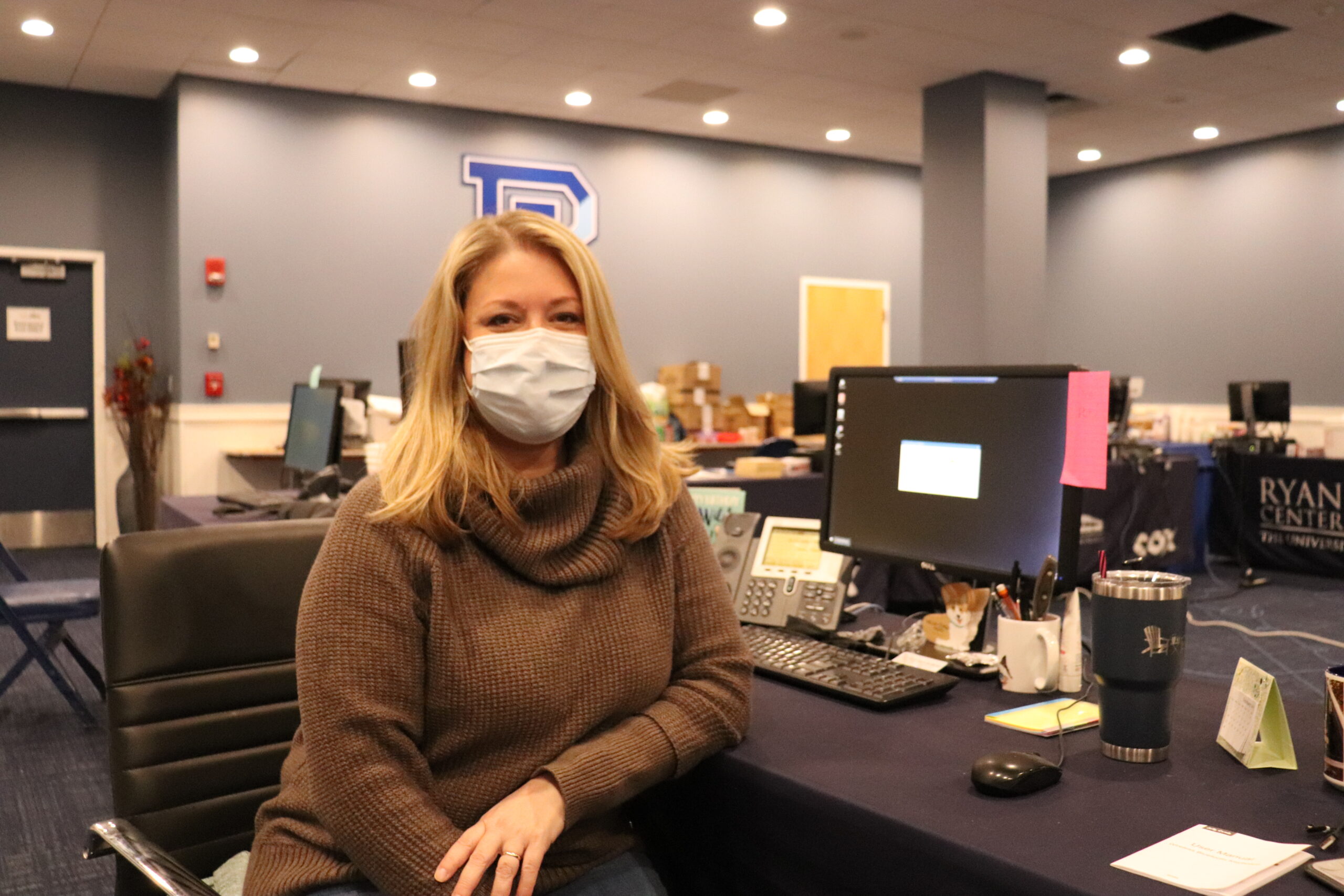Nurses work to combat spread of virus through contact tracing
Often relegated to the background, the Cigar takes a closer look at those contact tracing COVID-19 in the University community. Photo by Nicole Wagner.
Throughout the COVID-19 pandemic, a team of 60 registered nurses and nursing students have worked to trace cases of COVID-19 through the University of Rhode Island community.
On average, according to Director of Health Services and Vice President for Student Affairs Ellen Reynolds, eight to 10 contact tracers a day monitor the close contacts of positive COVID-19 cases in the community to keep community spread low. These tracers work from 8 a.m. to 8 p.m. throughout the week to isolate and quarantine students who contracted the virus or were in close contact with someone who tested positive.
Upon identifying a positive COVID-19 case, a contact tracer will call the student to notify them. Sue Guevremont, a contact tracer and registered nurse, said this is then followed by a “case interview,” where the contact tracer will ask the student in question who their close contacts in the past 24 hours have been. Reynolds said a close contact is someone who was within six feet of the positive case for 15 minutes or longer.
These positive COVID-19 cases are identified by rapid result tests on campus done in batches that come back within an hour, according to Reynolds.
She said that those living or interacting with students who have been within a six-foot radius of the positive case test without masks for 15 minutes or longer are considered close contacts.
“We will be like our peer institutions and have to take a pause if we don’t get this going in a different direction,” Reynolds said. “And that means all of us– every student on this campus needs to take this seriously right now.”
Within a 24-hour period, the team works to notify close contacts of their exposure and places them in quarantine, according to Guevremont.
For on-campus students, this means that they will be moved to one of the University’s quarantine locations; for off-campus students, they can quarantine at their respective houses; and for students in Greek Life housing, they may be allowed to quarantine where they reside, as these houses have personal chefs.
The quarantine period for close contacts is 10 days, similar to the 10-day isolation period for positive cases, according to Reynolds. After this, students are asked to monitor their symptoms for four days after to complete the 14-day period wherein symptoms may show.
For those who do not comply with quarantine or isolation guidelines, contact tracer and registered nurse Jessica Smith said they are referred to student conduct for review.
“In the midst of a global pandemic, there just needs to be some responsibility taken on their part,” Smith said of students who have not abided by the University’s COVID-19 guidelines.
There are also cases of people who self-identify as a close contact when the student who contracted the virus does not tell the contact tracers who they have been in contact with, according to Smith.
At the start of their shift, Guevremont said the tracers will assess the positive cases from the previous day, take students off of quarantine or isolation and check in on their statuses.
As for clo
se contacts outside of the University community, the contact tracers send their list to the Rhode Island Department of Health to notify those close contacts of their exposure.
Guevremont and Smith are two of the numerous contact tracers who check in with students in isolation. These registered nurses are able to give these students health education on how best to monitor and take care of themselves regarding COVID-19 symptoms during this time period, according to Reynolds.
At the state level, Reynolds said contact tracers notify positive COVID-19 cases, tell them what isolation will be like and tell them to call their doctor with any questions pertaining to their health. However, as a University, URI plays a different role in this series of events.
“That’s not what happens at URI,” Reynolds said. “We are the doctor. We are the nurse. We are the health center that cares for them.”
This is evident as students are able to ask their registered nurse contact tracers who call them questions pertaining to their symptoms, and what best to do to manage the virus at the lowest level for symptoms. The contact tracers are also able to give them advice on when they might need to see a healthcare provider in person, or call 911.
There are senior nursing students who work as contact tracers at the University as well for their community nursing rotation, according to Reynolds. These students go through the national course from Johns Hopkins University on contact tracing for fundamental knowledge. Then, student nurses go through URI-specific contact tracer training to explain expectations for communication with students, to when the situation needs to be raised to a professional nurse’s attention, according to Reynolds.
While fatigue in the community is widespread as COVID-19 cases increase, Reynolds emphasized the importance of staying within your household “bubble.”
“Right now we need people to just, to really pay attention,” Reynolds said. “Because if we let our guards down, we’re not [going to] be okay.”

